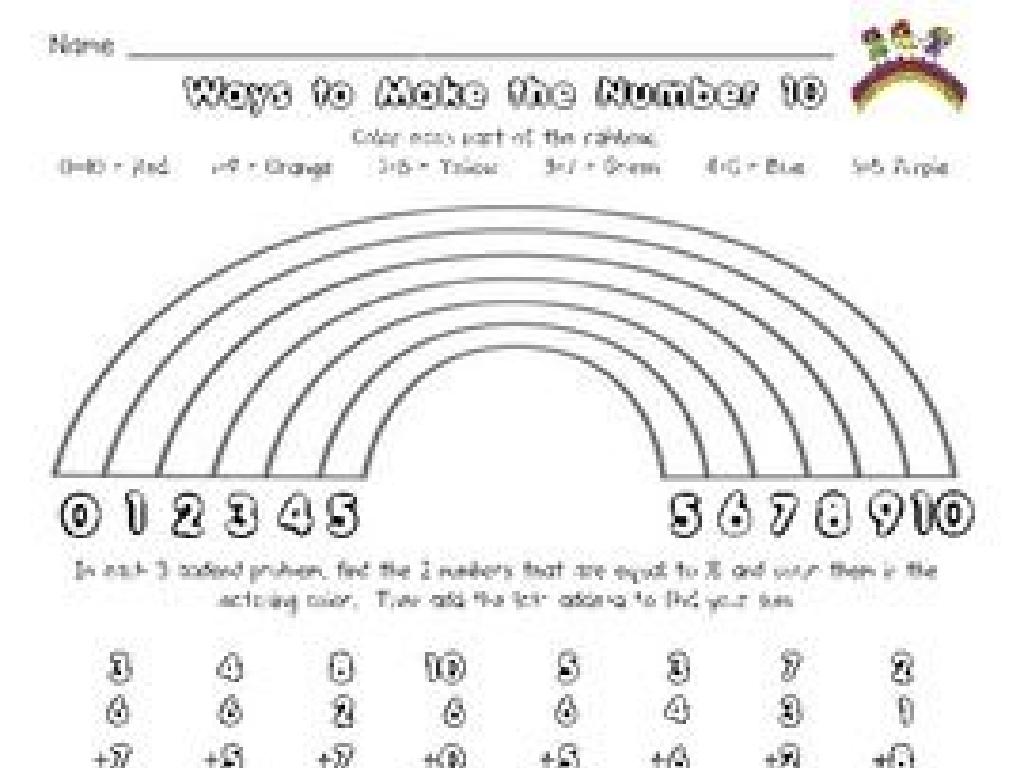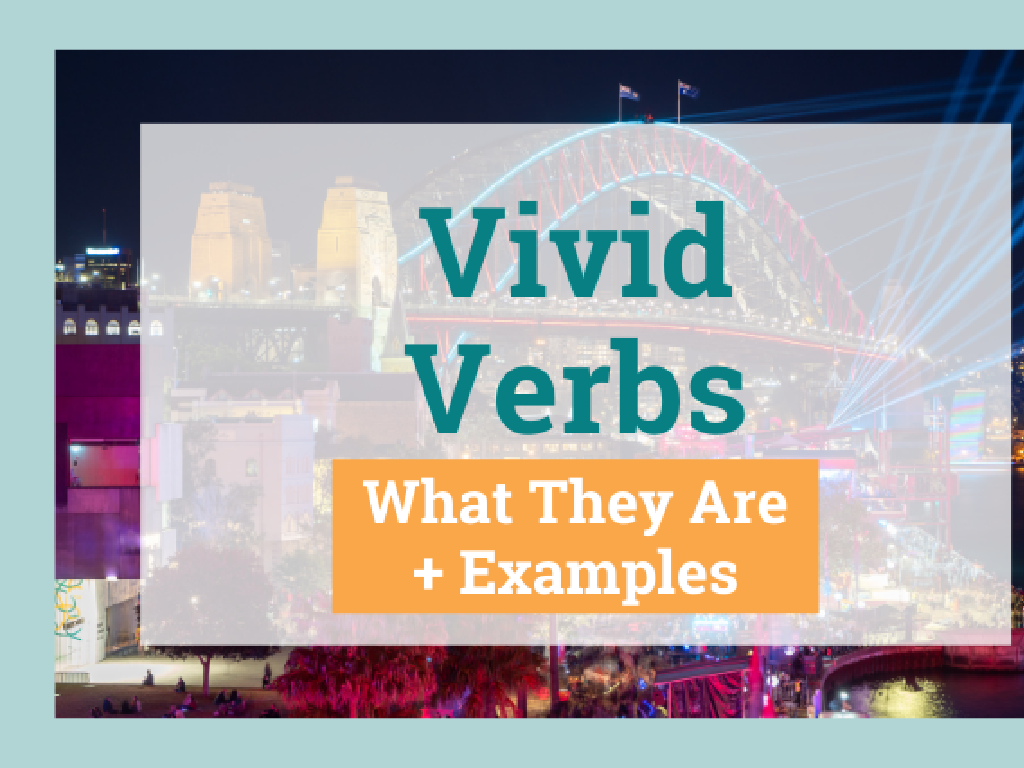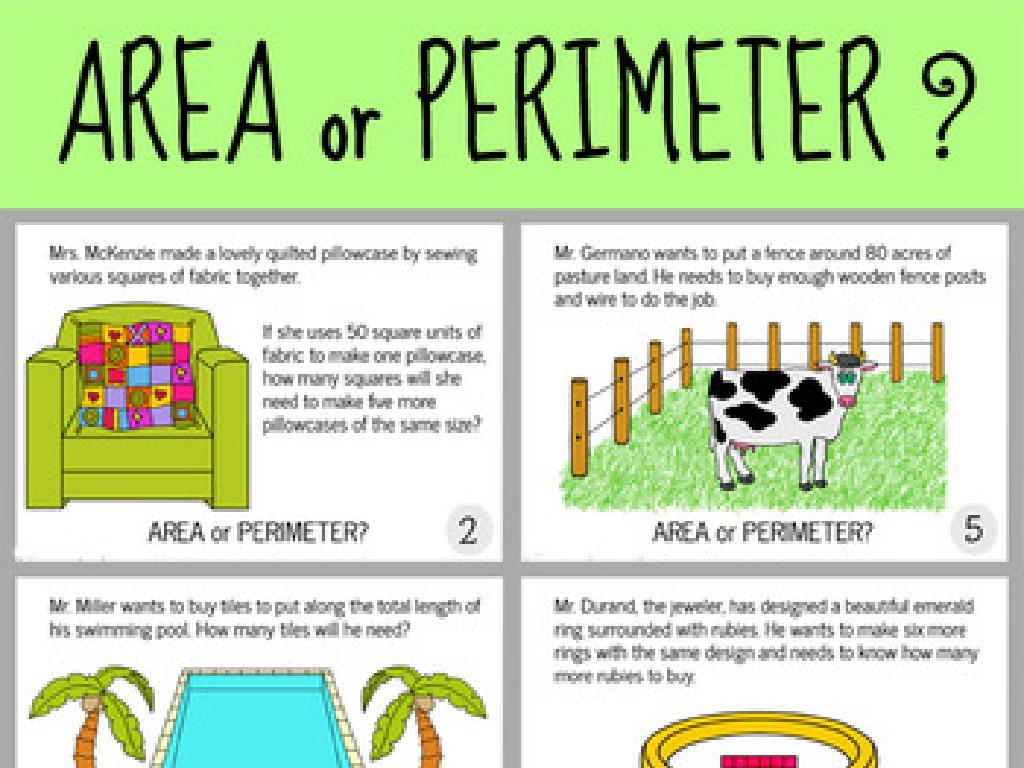Identify The Verb Mood
Subject: Language arts
Grade: Eighth grade
Topic: Verb Tense And Mood
Please LOG IN to download the presentation. Access is available to registered users only.
View More Content
Identifying Verb Mood
– Verbs: Core of sentence structure
– Today’s goal: Understand verb mood
– Verb mood: Speaker’s attitude
– Indicates how the verb expresses an action or state of being
– Overview: Types of verb moods
– Five moods: Indicative, Imperative, Interrogative, Conditional, Subjunctive
|
This slide introduces the concept of verb mood, which is essential for understanding how verbs can change the tone of a sentence. Verb mood allows the speaker to express action or state of being with different attitudes, such as facts (indicative), commands (imperative), questions (interrogative), possibilities (conditional), or hypotheticals (subjunctive). It’s important to provide examples for each mood to help students identify them in context. For instance, ‘He walks to school’ (indicative) versus ‘Walk to school!’ (imperative). Engage the class with sentences they can analyze to determine the mood of the verbs used.
Exploring Verb Moods
– Define verb mood
– Verb mood reflects the speaker’s attitude
– Verb mood’s role in sentences
– It influences how the verb forms in a sentence
– Examples of verb moods
– Indicative: states facts, Imperative: gives commands, Subjunctive: expresses wishes or doubts
– Practice identifying moods
|
Verb mood is a feature of verbs that expresses the speaker’s attitude toward the action or state of the verb. It’s crucial for students to understand that verb mood can change the tone and intention behind a sentence. For example, the indicative mood is used for stating facts or asking questions, the imperative for commands or requests, and the subjunctive for wishes, hypotheticals, or conditions contrary to fact. Provide students with sentences and ask them to identify the mood of the verbs used. This will help them see how verb mood can alter meaning and how it’s used in everyday language.
Exploring Verb Moods
– Indicative: states facts
– Example: ‘The sky is blue.’
– Imperative: gives commands
– Example: ‘Please sit down.’
– Interrogative: asks questions
– Example: ‘Are you coming?’
– Conditional: expresses ‘if’ scenarios
– Example: ‘If I were you, I’d go.’
– Subjunctive: conveys wishes or doubts
– Example: ‘I wish I were a bird.’
|
This slide introduces students to the five types of verb moods. The indicative mood is used for stating facts or beliefs. The imperative mood is for giving orders or making requests. The interrogative mood is for asking questions. The conditional mood expresses conditions and is often associated with ‘if’ statements. Lastly, the subjunctive mood is used for hypothetical situations, wishes, or expressing doubts. It’s important to provide examples for each to help students understand the usage. Encourage students to create their own sentences using different verb moods to enhance their grasp of the concept.
Exploring Verb Moods: Indicative
– Indicative mood: most prevalent
– The indicative mood is used for most of our daily communication.
– Expresses facts and beliefs
– It’s for stating actualities or what we believe to be true.
– Example sentences in class
– ‘The cat sleeps on the mat’ shows a fact. ‘I think it will rain’ expresses a belief.
– Understanding through usage
|
The indicative mood is the most commonly used verb mood in English and is essential for conveying statements of reality or belief. It is the mood of the verb that is used to state a fact or ask a question. For example, ‘The sky is blue’ or ‘Do you have a pencil?’ are both in the indicative mood. In this slide, we’ll explore the indicative mood through examples and class participation. Have students create their own sentences in the indicative mood to reinforce their understanding. Encourage them to distinguish between statements of fact and belief, and to recognize the indicative mood in various texts they read.
Exploring the Imperative Mood
– Imperative mood for commands
– Used to give orders or make requests, e.g., ‘Please sit down.’
– Directly addresses the listener
– The speaker is speaking to you directly, often without the subject ‘you’.
– Recognizing imperative sentences
– Sentences like ‘Stop talking’ or ‘Listen carefully’ are imperative.
– Practice with examples
– ‘Go to your room!’, ‘Study for your test.’
|
The imperative mood is a grammatical mood used to express commands, direct requests, or prohibitions. In this mood, the subject is often implied rather than explicitly stated, usually being the person spoken to. It’s important to teach students to recognize the imperative mood by looking for sentences that issue a command or request. Examples should be clear and relatable, encouraging students to think of commands they hear in their daily lives. In-class activities could include identifying imperative sentences in a text or writing their own examples. This will help solidify their understanding of how the imperative mood functions in English grammar.
Exploring Interrogative Mood
– Interrogative mood for questions
– Used when the speaker is asking a question.
– How to form interrogative sentences
– Start with a helping verb, change the word order, or use a question word (who, what, where, when, why, how).
– Examples of interrogative mood
– ‘Are you feeling well?’, ‘What is your name?’, ‘Where did they go?’
– Practice forming questions
|
The interrogative mood is a form of the verb that is used when asking a question. Teach students to recognize the structure of interrogative sentences, which often begin with a helping verb or a question word. Provide clear examples to illustrate the concept. Encourage students to practice by converting statements into questions and creating their own examples. This will help them understand how to use the interrogative mood in both writing and speaking. During the next class, review their questions to ensure understanding and correct usage.
Exploring Conditional and Subjunctive Moods
– Conditional mood with ‘if’ clauses
– Used for possibilities, e.g., ‘If I were taller, I d play basketball.’
– Subjunctive mood for hypotheticals
– Imaginary or contrary-to-fact scenarios, e.g., ‘If I were president, I d change the law.’
– Subjunctive for expressing wishes
– Desires or imaginary situations, e.g., ‘I wish I were a wizard.’
– Examples of both moods in sentences
– ‘If I had a bike, I d ride to school. I wish I had a bike.’
|
This slide introduces students to the conditional and subjunctive moods, which are used to express hypothetical situations, wishes, and conditions that are not true. The conditional mood often pairs with ‘if’ to discuss what would happen under certain circumstances. The subjunctive mood is used to explore scenarios that are contrary to fact, desires, or imaginary situations. Provide clear examples to illustrate the use of each mood. Encourage students to create their own sentences using both moods to deepen their understanding. Discuss how the mood of a verb can change the meaning of a sentence and its relation to reality.
Identifying Verb Mood in Sentences
– Understand verb moods
Verb mood reflects the speaker’s attitude. E.g., indicative, imperative, subjunctive.
– Tips for recognizing moods
Look for key words, the sentence’s purpose, and the speaker’s intent.
– Practice with sample sentences
Analyze sentences to determine the mood of the verbs used.
– Discuss sentence examples
We’ll review examples together to solidify understanding.
|
This slide introduces the concept of verb mood, which is essential for understanding the speaker’s attitude and intent in written and spoken language. Start by explaining the different verb moods like indicative, imperative, and subjunctive. Provide tips such as identifying key words that typically accompany each mood, understanding the purpose of the sentence, and considering the speaker’s intent. Then, engage students with practice sentences where they can apply these tips to identify the mood. Finally, discuss these examples as a class to ensure comprehension and address any misconceptions. Encourage students to ask questions and share their thoughts during the discussion.
Class Activity: Mood Detectives
– Pair up and find sentence moods
– Share findings with the class
– Discuss the importance of mood
– Understanding mood helps grasp the author’s intent and the emotional context of sentences.
– Reflect on mood detection skills
– Think about how identifying mood has improved your interpretation of texts.
|
In this interactive class activity, students will work in pairs to identify the mood conveyed in various sentences. This exercise will help them understand the concept of verb mood, which reflects the speaker’s attitude and how they are expressing themselves. After identifying the moods, each pair will share their findings with the class, fostering a collaborative learning environment. The discussion will focus on the significance of recognizing mood in language, as it enhances comprehension and appreciation of different texts. Encourage students to reflect on how their ability to detect mood can improve their communication skills and interpretation of literature. Possible activities include identifying moods in excerpts from novels, creating sentences with different moods, and role-playing to express various moods.
Understanding Verb Moods: Summary & Homework
– Recap of the five verb moods
– Review indicative, imperative, interrogative, conditional, and subjunctive moods.
– Significance of mood in writing
– Mood adds tone and intention behind sentences.
– Homework: Craft sentences for each mood
– Create 5 original sentences using each of the 5 verb moods.
– Share and discuss in the next class
– Be prepared to present and explain your examples.
|
As we conclude our lesson on verb moods, it’s crucial to reinforce the knowledge by summarizing the five types: indicative, imperative, interrogative, conditional, and subjunctive. Understanding verb mood is essential for students as it helps convey the writer’s attitude and purpose in a sentence. For homework, students are tasked with writing 5 sentences for each verb mood, which will aid in solidifying their grasp of the concept. In the next class, students will have the opportunity to share their sentences, fostering a deeper understanding through discussion and peer feedback. This exercise will not only enhance their writing skills but also their ability to analyze and interpret the mood in others’ writing.






